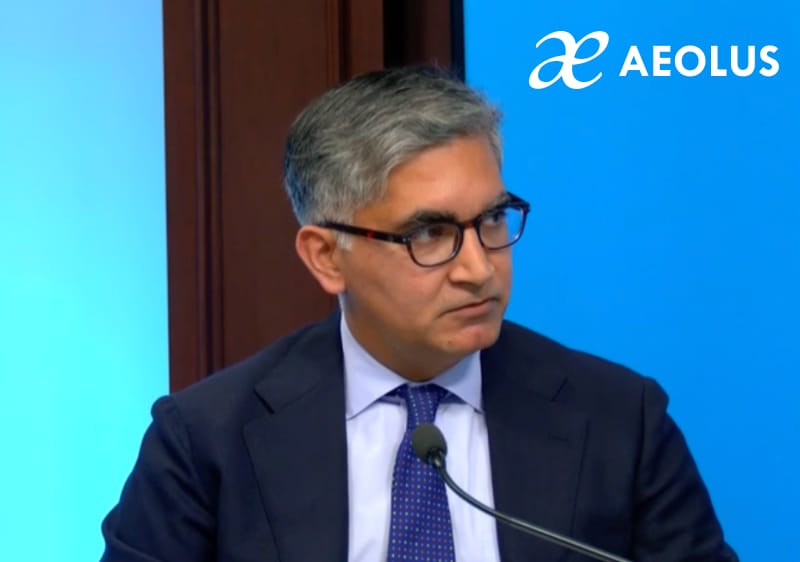If cost-of-capital is equal to the rate of return, something has to change: Aditya Dutt, Aeolus

In reinsurance, the industry had softened its pricing to an unsustainable degree, resulting in a situation where margins for capital providers were thin to non-existent. But, recent moves in pricing, terms and conditions are an attempt to “balance things in favour of the reinsurers,” Aditya Dutt, President of Aeolus Capital Management explained.
Speaking recently during an AM Best hosted webinar, Aditya Dutt explained that margins had dwindled to the point that “something has to change.”
Dutt feels that the shift in reinsurance pricing is historically notable and on a par with previous hard markets, such as the post-Katrina and post-WTC reinsurance market environments.
“The market has improved, in terms of terms, conditions and price,” Dutt explained. “But what’s remarkable to me is, relative to history over the last 30 years or so, this certainly feels like one of the market changing, or market turning events of great significance.”
He added that, over the last five years, “we’ve had an evolution in our market that’s fairly significant.”
Going on to say that, “There are some unique characteristics of this market, some that are comparable to what we’ve seen in the past.
“As people say, history doesn’t necessarily repeat but it does rhyme, and I think we’re seeing a period of rhyming here.”
This hardening of reinsurance rates and terms has coincided with factors outside of the industry’s control, which has exacerbated the situation and also driven the shortage of capacity both reinsurance and ILS are seeing, Dutt believes.
He said that the “tightening of capital markets conditions” has coincided with a difficult few years, especially in property cat reinsurance, which has been “causing a lot of pain in our market with respect to capital.”
“The shortage of capacity, some of the reasons I think we can point to our market, property reinsurance and casualty reinsurance, some of those factors, but a lot of them will have to point to economic factors beyond our control,” Dutt explained.
Adding, “It’s important to note, there’s a big difference in our economic conditions, relative to the past 30 years where we haven’t had cat events, combined with a very, very difficult and challenging capital markets environment, and a reinsurance market that’s arguably more dependent on external capital than it ever has been in the past.”
All of which has driven the evolution of property catastrophe reinsurance risk appetites and ultimately pricing, driving change through recent renewals.
Dutt noted that rates have evolved, but notes that the reinsurance industry’s returns over the past decade have not been adequate.
While reinsurers have levers on the investment side, in the current macro-environment, just like the ILS market they also want to generate better underwriting returns, to deliver more to their investors and stakeholders.
“No shareholder, public or private, will stand there and say, a return equal to the cost-of-capital is adequate,” Dutt stated.
Adding, “I think that’s been a valid criticism of our industry, over a five to six year period. If the cost-of-capital is equal to the rate of return, something has to change.”
He went on to say that as a reinsurer, Aeolus operates in an ecosystem with primary insurers, brokers, retrocessionaires and capital providers, each of which needs to make its role in the market stack up, financially.
“What we’re seeing is, rates and terms and conditions, are an attempt to balance things in favour of the reinsurers when cost-of-capital is equal to the rate of return, or roughly close,” he explained.
But added, on whether the industry has neared rate adequacy, that this is harder to define as, “The adequacy is an unknown point, it’s not a golden number, because it’s in balance with three or four other parties that are involved.”
Also read: ILS & reinsurance must demonstrate sustainable margins: Aditya Dutt, Aeolus.






